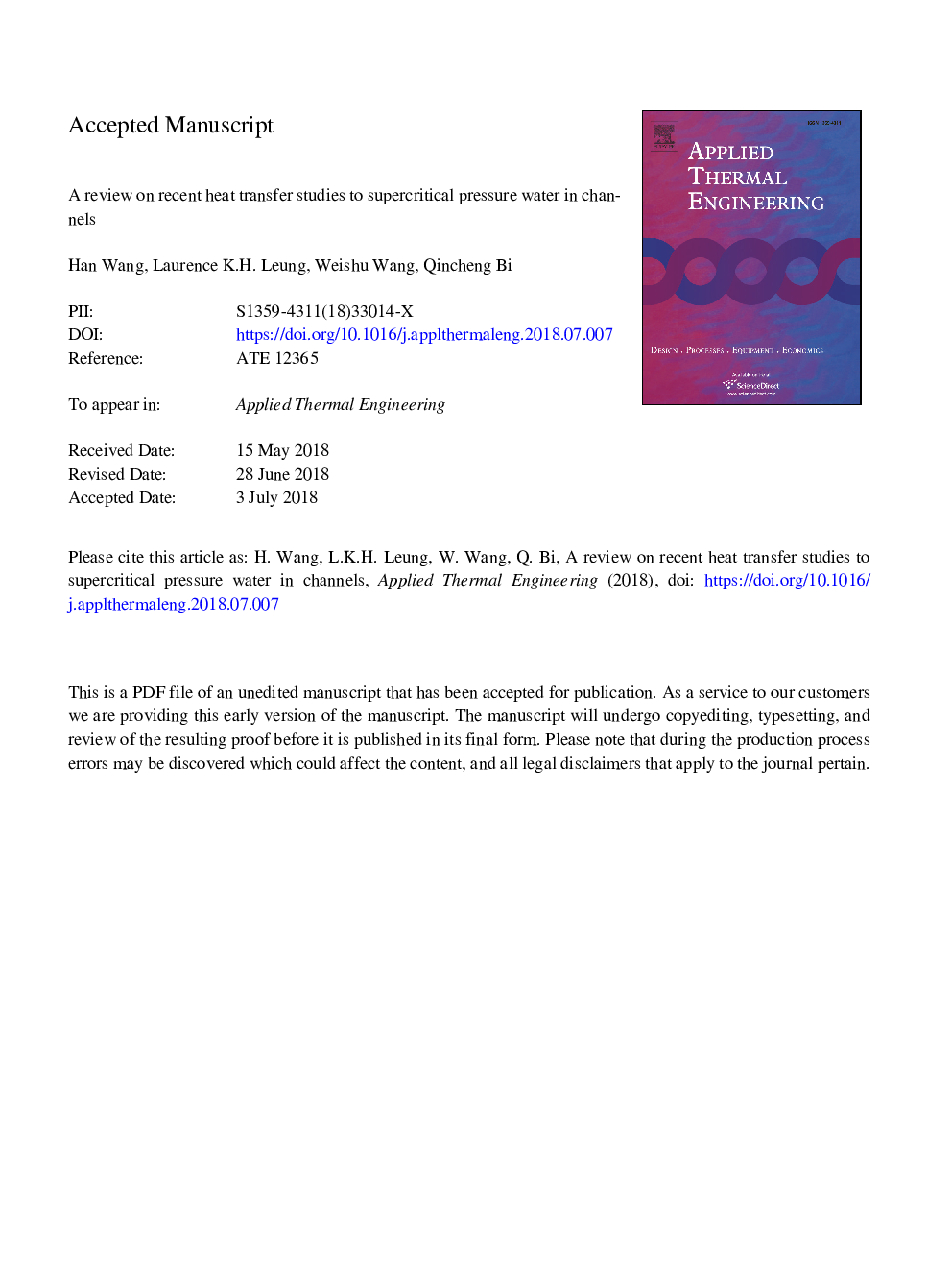| Article ID | Journal | Published Year | Pages | File Type |
|---|---|---|---|---|
| 7044837 | Applied Thermal Engineering | 2018 | 93 Pages |
Abstract
Recent studies on heat transfer to super-critical water (SCW) in tubes, annuli and rod bundles have been reviewed in support of the development of supercritical water-cooled reactors. Experimental investigations are primarily focused on the heat transfer deterioration (HTD) to examine its general behaviors, transition boundary and physical mechanisms. Large amount of experimental data were obtained from the experiments supplementing the extensive database previously compiled for fossil fuel-fired power plants. Prediction methods for heat-transfer coefficient were developed from various databases. These methods provide reasonable predictions at normal and enhanced heat-transfer regions, but fail to capture HTD. The upstream effects have not been considered in the prediction methods and may have an impact on local heat transfer, particularly in a channel with a non-uniform axial power profile or with flow or pressure transients. Most numerical studies evaluated the applicability of turbulence models to SCW using the computational fluid dynamics tools. Significant challenges remain in establishing the reliability of the turbulence models and the modeling of buoyancy and turbulent heat flux. Direct numerical simulation and large eddy simulation have been applied in understanding the HTD phenomena. These studies are limited to simple channels over a short axial distance at relatively low Reynolds numbers.
Keywords
Related Topics
Physical Sciences and Engineering
Chemical Engineering
Fluid Flow and Transfer Processes
Authors
Han Wang, Laurence K.H. Leung, Weishu Wang, Qincheng Bi,
